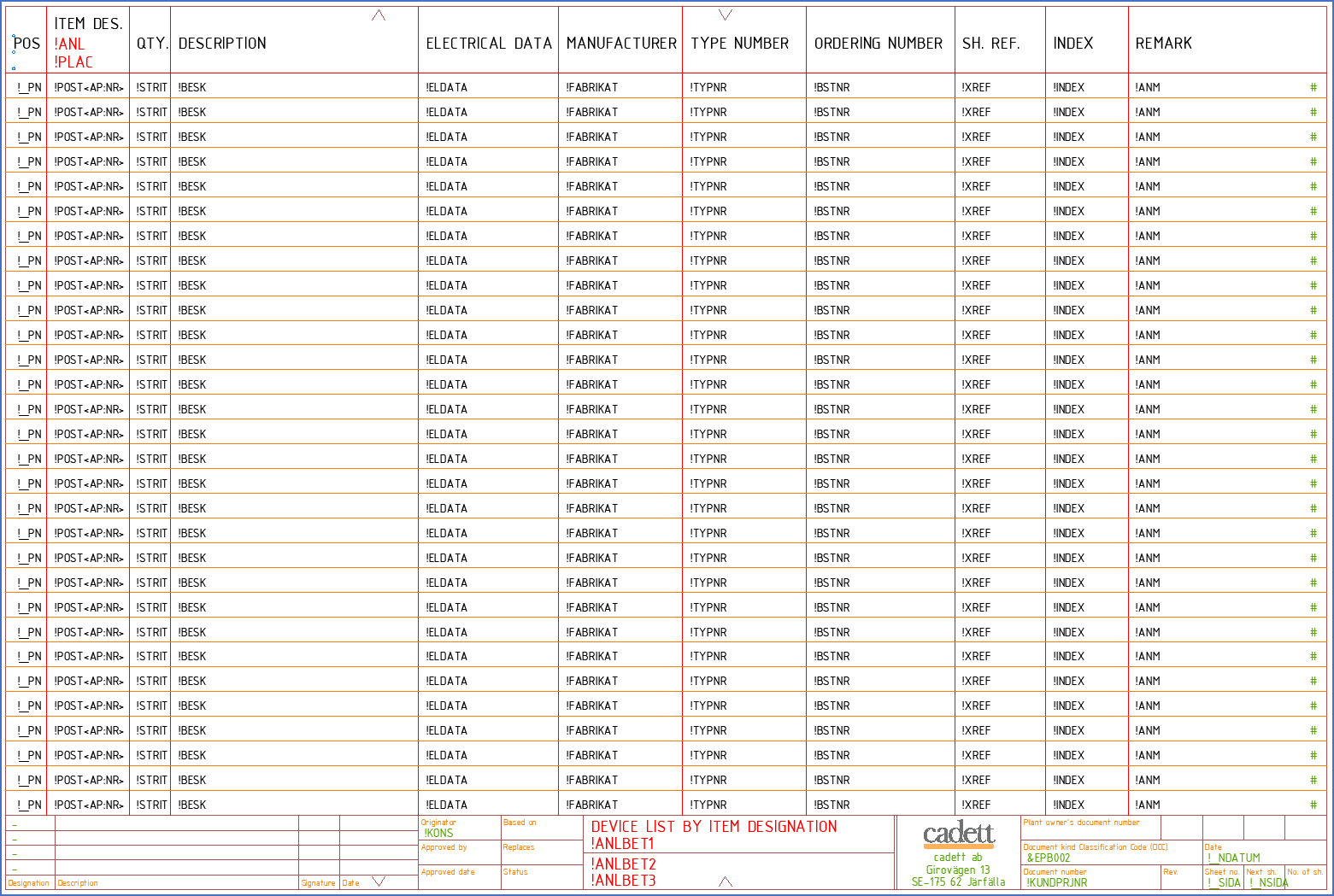|
<< Click to Display Table of Contents >> General description |
  
|
|
<< Click to Display Table of Contents >> General description |
  
|
All DXF forms in cadett ELSA are collected in a special system project, which has been created for that sole purpose. This project is named DXF forms (short name 0FORM) and is normally located in the System group.
A DXF form may for example look like shown in the figure below.

Figure 1256: A typical DXF form, in this case a device list summarized by item designation
A distinguishing feature of DXF forms is that the report is usually presented as a table with rows and columns. There is a title written in ordinary AutoCAD text at the top of every column. The Report Generator adds the selected content to the table. The content is selected by placing report variables where the content of the report shall be located. When entering the variables, use the text font, text size and text justification that you want to have for the text in the finished report. All AutoCAD and TrueType fonts may be used.
Another feature of DXF forms is the possibility to use the same drawing frame and title field as when working with circuit diagrams or other types of ordinary drawing sheets. In fact, this is one of the main reasons for using this type of report – it is uncomplicated to work with all documents when they have the same format. Additionally, you will attain a uniform and comprehensible documentation.
The Report Generator may add information automatically to the title field. Report variables are used for this aim as well. In general, the title field consists of a block with attributes, which does not constitute a problem. Report variables are entered as values of the corresponding attributes in the title field. When the report is generated, these report variables will be replaced by the text they symbolize, to complete the title field with the information required.
Thus, the Report Generator replaces the names of the report variables with the texts that they symbolize, independent of matters such as if the report variables are AutoCAD text objects or values in attributes.